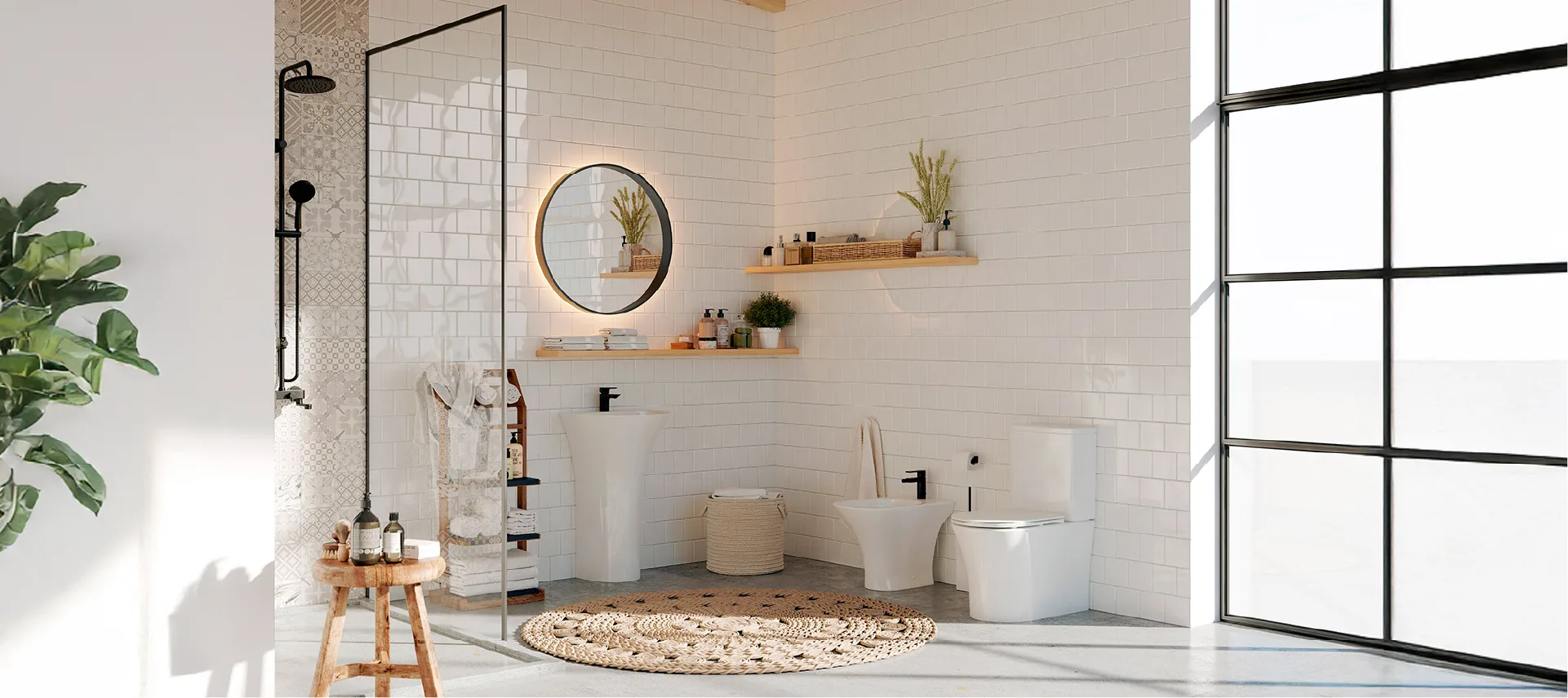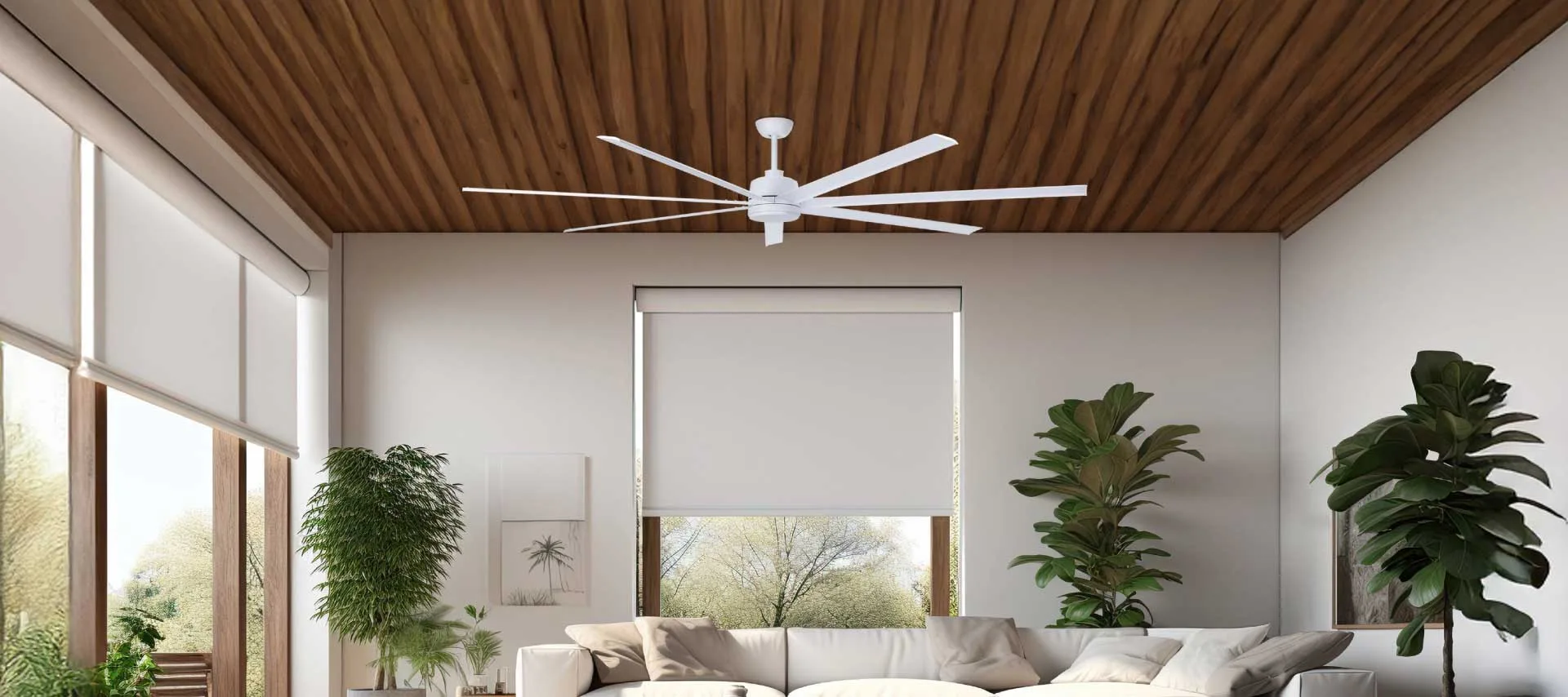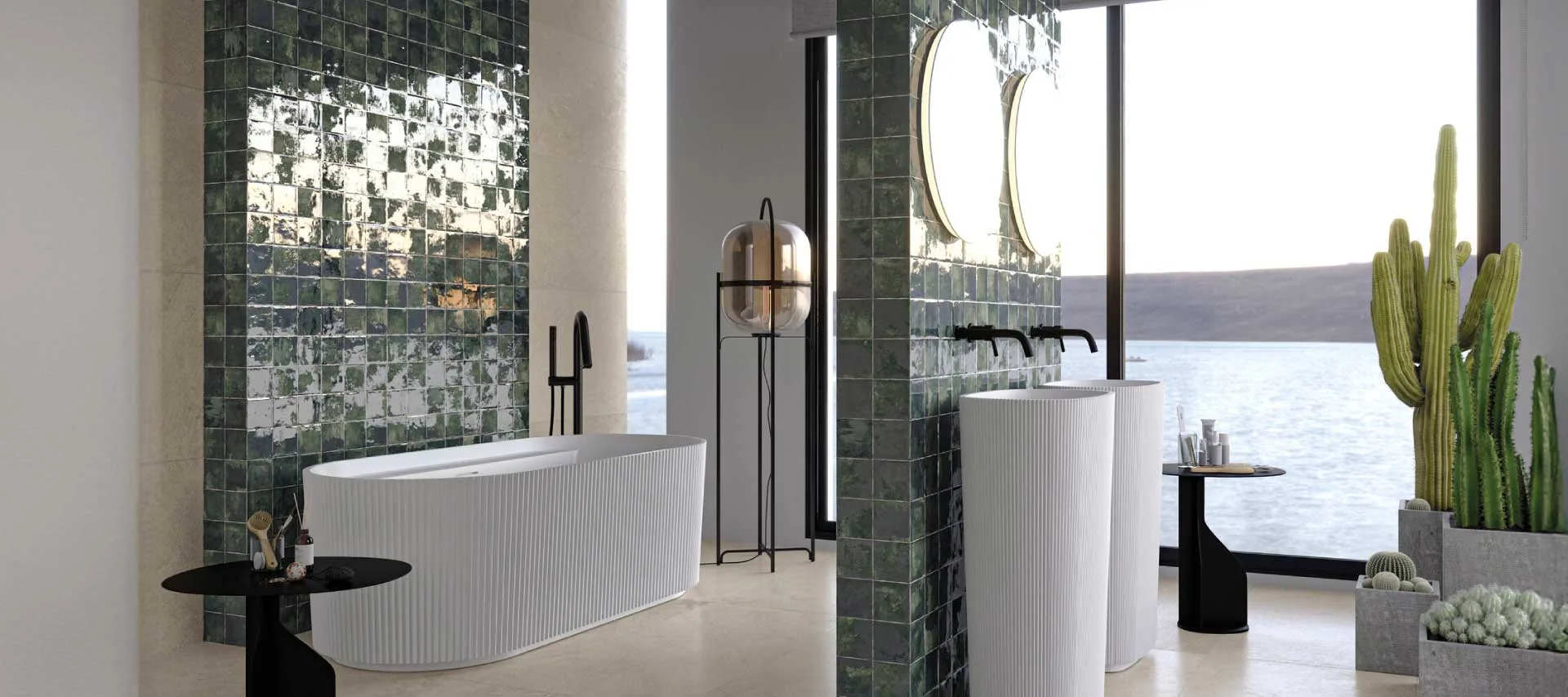When designing or renovating a bathroom, the toilet is often one of the most overlooked elements. However, the finish and placement of a toilet play a crucial role in the overall functionality and aesthetics of the space. Selecting the right toilet finish ensures durability and ease of maintenance, while careful placement enhances usability and harmony with other fixtures. This article will delve into the importance of toilet finishes and provide practical tips for deciding on the best placement in your bathroom.
Toilet finishes: a guide to durability and style
A toilet’s finish is more than just its appearance— it plays a key role in hygiene, durability, and ease of cleaning. Here are the most common toilet finishes and their key characteristics:
1. Standard glazed porcelain finish
Porcelain is the most popular material for toilets, and its finish typically involves a layer of glaze to seal and protect the surface.
- Pros:
- Highly durable and resistant to chipping.
- Easy to clean and maintain.
- Available in a classic white finish, which suits most bathroom styles.
- Cons:
- Limited color options compared to some other finishes.
2. Matte finishes
Matte toilets provide a contemporary and understated look, offering an alternative to glossy finishes.
- Pros:
- Reduces visible water spots and fingerprints.
- Creates a modern and minimalist aesthetic.
- Cons:
- Slightly harder to clean due to the lack of a reflective surface.
3. Glossy finishes
Glossy finishes are polished and reflective, giving the toilet a sleek and sophisticated look.
- Pros:
- Easy to wipe clean and resistant to stains.
- Reflects light, which can make small bathrooms appear brighter.
- Cons:
- Shows water spots and smudges more easily.
4. Coloured or textured finishes
Some homeowners opt for coloured or textured toilet finishes to add a distinctive touch to their bathroom. Options range from bold colors to finishes that replicate natural stone or metallic surfaces, offering both style and personality.
- Pros:
- Adds personality and complements specific design themes.
- Can serve as a focal point in the bathroom.
- Cons:
- May be harder to find and more expensive.
- Limited availability for repairs or replacements.
5. Anti-bacterial or self-cleaning coatings
Innovative finishes include anti-bacterial coatings or self-cleaning technologies that prevent bacterial buildup and minimize maintenance. These advanced solutions offer a more hygienic and hassle-free bathroom experience.
- Pros:
- Promotes better hygiene.
- Reduces long-term maintenance.
- Cons:
- Higher upfront cost.

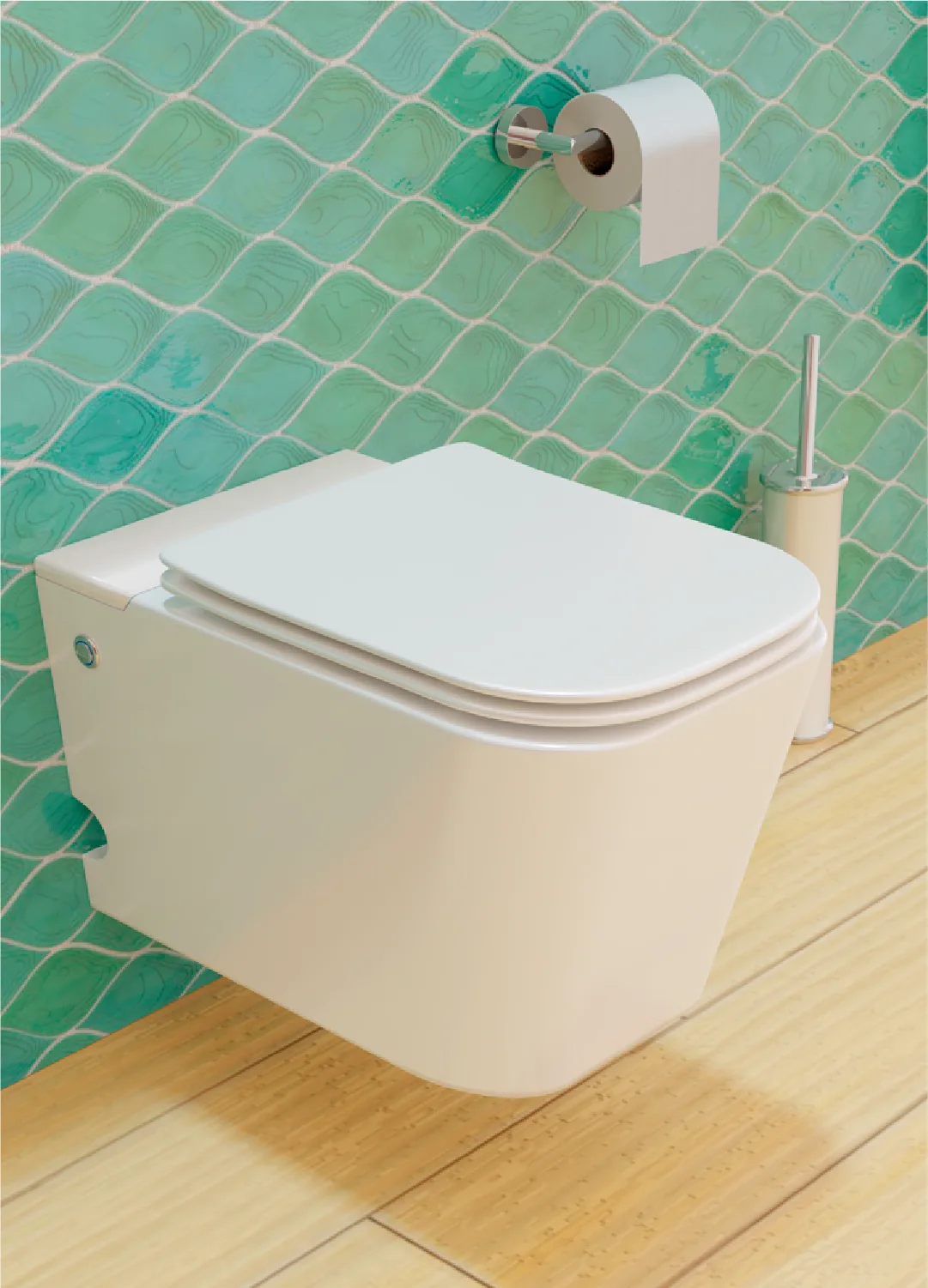
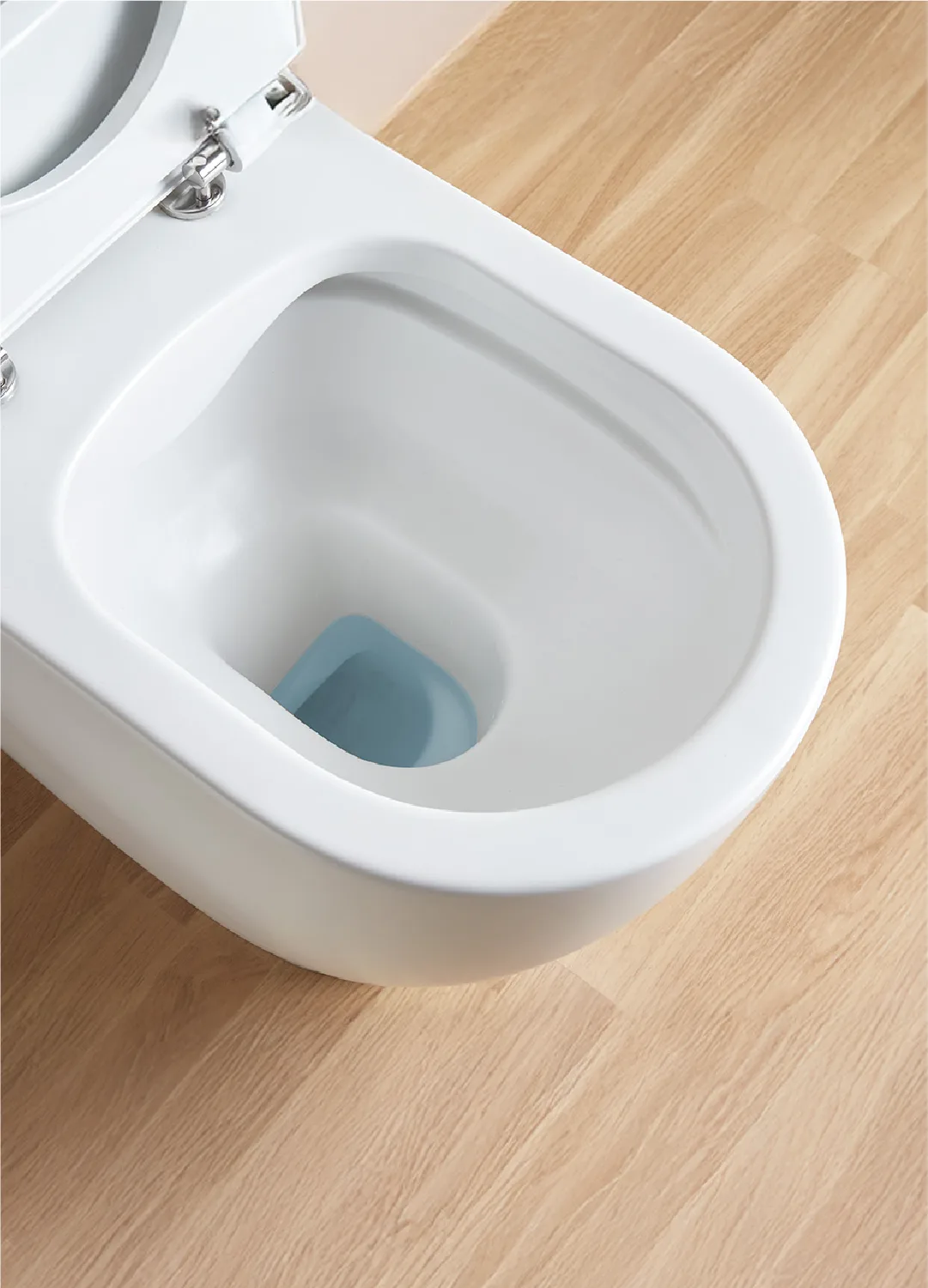
How to choose the right toilet finish
When selecting a finish for your toilet, consider the following factors:
- Bathroom style: Match the finish to your overall bathroom design. For example, a matte finish complements a contemporary bathroom, while a glossy white finish is versatile for traditional or modern spaces.
- Durability: Opt for finishes that are resistant to wear and tear, especially in high-traffic bathrooms.
- Ease of maintenance: Choose a finish that is easy to clean and hides stains effectively if you want a low-maintenance solution.
- Budget: While some finishes, such as anti-bacterial coatings, can be more expensive, they may save you time and money in the long run by reducing cleaning efforts.
Toilet placement: maximizing functionality and flow
The placement of the toilet in your bathroom is just as important as the design and finish. Proper placement ensures convenience, comfort, and a seamless integration with other bathroom elements.
1. Understand the rough-in measurement
The toilet rough-in measurement refers to the distance from the wall to the center of the waste outlet. Standard rough-in sizes are 10, 12, or 14 inches. Before purchasing a toilet, confirm that its rough-in measurement matches your bathroom’s plumbing layout.
2. Prioritize accessibility
The toilet should be easily accessible without disrupting the flow of the bathroom. Here are some key placement tips:
- Ensure at least 15 inches of clearance from the center of the toilet to any side wall or obstacle.
- Allow at least 24 inches of clear space in front of the toilet for comfortable use.
- In small bathrooms, consider space-saving options like corner toilets or wall-mounted models.
3. Maintain visual balance
A well-positioned toilet enhances the overall bathroom design and flow. Avoid making the toilet the first thing you see upon entering — especially in powder rooms or guest bathrooms. For a more refined look, consider placing it to the side or partially concealing it behind a vanity or half wall. This layout choice improves bathroom aesthetics and offers greater privacy.
4. Consider plumbing access
While bathroom aesthetics matter, functionality should always come first. Place the toilet where plumbing connections are easily accessible to simplify installation and future maintenance.
5. Plan for comfort height
Comfort height toilets, which are 17-19 inches tall, are a good choice for users with mobility issues or taller individuals. Proper placement should accommodate this height without making the bathroom feel cramped.
Placement in relation to other fixtures
The placement of the toilet in relation to other fixtures—such as the sink, shower, and bathtub—greatly impacts bathroom functionality and user comfort:
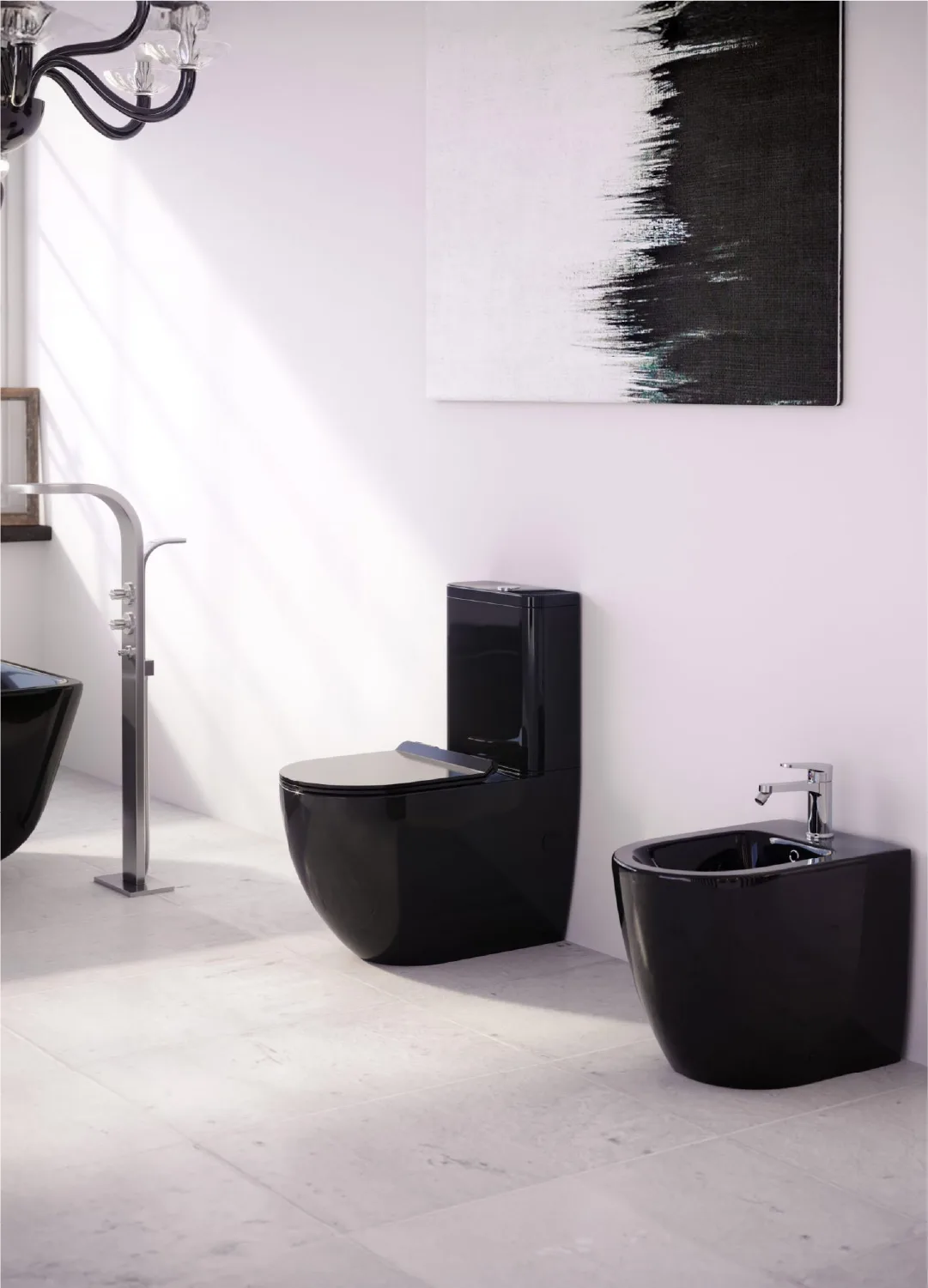
- Sink and vanity: The toilet should be close to the sink or vanity for convenience but far enough to avoid creating a cluttered appearance. Maintain at least 24-30 inches of spacing.
- Shower or bathtub: Avoid placing the toilet too close to the shower entrance to prevent water splashes from reaching it.
- Storage units: If your bathroom includes storage cabinets or shelves, ensure they are not placed above the toilet to avoid accidental drops of toiletries or towels.
Special considerations for small bathrooms
Compact bathrooms call for smart, space-saving solutions to maximise every inch. Here are some tips
- Opt for a wall-mounted or back-to-wall toilet to save floor space.
- Consider a corner toilet for awkward layouts.
- Use concealed cisterns or slim-profile designs to create a streamlined appearance.
Conclusion
Choosing the right toilet finish and placement can transform your bathroom from a functional necessity into a stylish and comfortable retreat. A thoughtfully chosen finish not only improves durability and hygiene but also elevates the overall aesthetic of your bathroom. Meanwhile, strategic placement ensures usability, accessibility, and harmony with other fixtures.
By taking the time to evaluate your options and consider the unique characteristics of your bathroom, you can make informed decisions that elevate the design and functionality of your space. Whether you’re updating an old bathroom or creating a modern new one, selecting the perfect toilet finish and optimal placement ensures your bathroom design remains both stylish and highly functional.
Looking for quality sanitary ware? Explore our selection online or visit Maurema Home at PinPoint. Get expert tips and discover durable, sanitary wares options.

